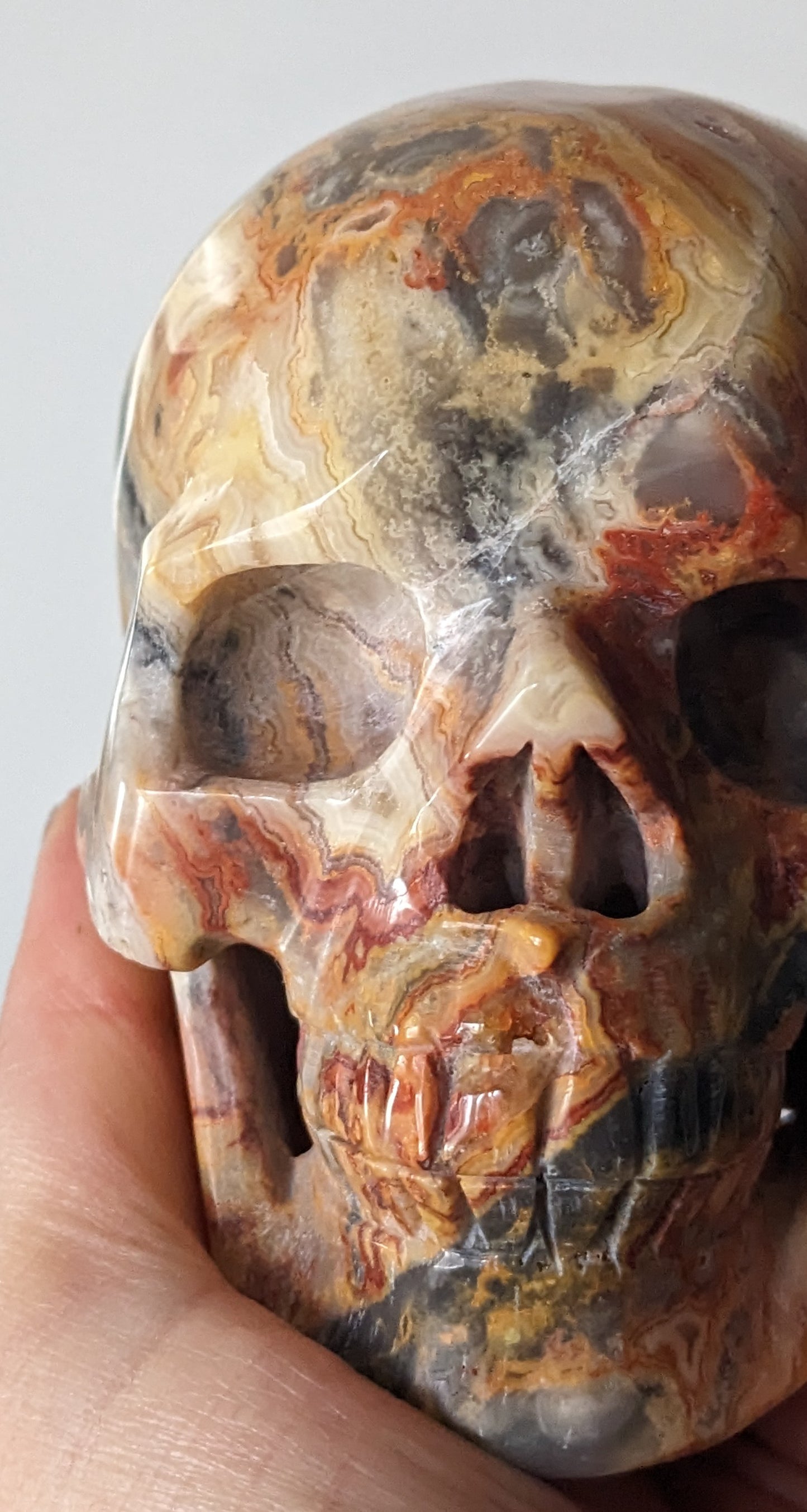Crazy Lace Agate Skull
Crazy Lace Agate Skull
Couldn't load pickup availability
Author
Author
MORE PHOTOS COMING SOON!
- 1.037kgs
- H 9cm L 12cm W 9.2cm
SYMBOLISM
- Joy
- Support
- Intellect
- Stability
- Self Esteem
MORE INFO
Crazy lace agate is a banded chalcedony (microcrystalline quartz) that's infused with iron and aluminum and is often brightly colored and complexly patterned. This produces the creamy browns, blacks, greys and golds (and occasional pinks or reds) swirled together in this stone.
This stone is found exclusively within the area known as Chihuahua, in Northern Mexico. Crazy lace agate is believed to have been created in the cretaceous period, about 65-90 million years ago.
Agate is the most famous chalcedony variety, recognized by its concentric color bands, formed by the remains of iron and manganese. The chemical composition of agate is the same as quartz, but with a different physical structure.
Instead of forming as large crystals, it is composed of tiny fibers and crystals whose shapes give rise to diagrams or drawings that acquire different names: as in this case "agate crazy". This mineral is formed in rock cavities of different types, especially lava.
Most agates occur as nodules in volcanic rocks or ancient lavas, in former cavities produced by volatiles in the original molten mass, which were then filled, wholly or partially, by siliceous matter deposited in regular layers upon the walls.
Agate has also been known to fill veins or cracks in volcanic or altered rock underlain by granitic intrusive masses. Such agates, when cut transversely, exhibit a succession of parallel lines, often of extreme tenuity, giving a banded appearance to the section.
The first deposit on the wall of a cavity, forming the "skin" of the agate, is generally a dark greenish mineral substance, like celadonite, delessite or "green earth", which are rich in iron probably derived from the decomposition of the augite in the enclosing volcanic rock.
Agates can also be found in sedimentary rocks. They need a cavity to form, so they are typically seen in limestone, dolomite, and shale which may have shells, tree branches, or roots in them that later decay away.


